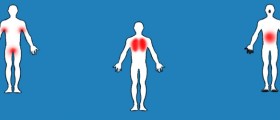
Plague is a term for certain infectious types of diseases which affect both humans and animals. The main cause of any plague is the bacterium medicinally referred to as Yersinia pestis which commonly lives and breeds in rodents and their fleas. This type of bacterium can be found in any part of the world, but fortunately enough it can be easily destroyed simply by exposure to drying and sunlight. It may survive in the air for up to one hour. There have been six outbreaks of plague since 2002, as reported by the World Health Organization. 98 percent of all cases of plague occur on the territory of the African continent.
Pneumonic Plague Dangers
Pneumonic plague is one of many types of plagues which may affect a human being. It affects the lungs and it can be spread rather easily through the air. When a person breathes in aerosolized bacteria, he or she may get the plague. This type of plague may also be spread by breathing in the bacterium suspended in the respiratory droplets from a person who is already infected. This type of plague may also occur if a person suffers from some other type of plague which simply spreads onto the lungs. These other types of plague usually involve the septicemic plague and the bubonic plague. Septicemic plague occurs when the bacteria multiplies in the blood of the host organism. This plague may also be considered as a complication of other types of plague or it can occur completely on its own. It can easily be described and characterized by certain symptoms such as shock, painful sensations in the abdomen, prostration, chills, fever and bleeding into the skin and other internal organs. This type of plague cannot spread from person to person. Other common type of plague is actually the most common of them all and it is referred to as the bubonic plague. Once the person gets bitten by an infected flea, he or she becomes infected and experiences certain symptoms such as weakness, chills, headache, fever, tender lymph glands and swelling of the lymph glands. This type of plague cannot spread from person to person. Pneumonic plague is much more virulent than the other two types of plagues and if left untreated it is commonly associated with a significantly high mortality rate.
Causes
There are two ways of causing pneumonic plague, the primary and the secondary. The primary way involves the inhalation of the harmful bacterium, while the secondary involves the spreading of the bacteria from the other affected organs to the lungs by using the bloodstream. Pneumonic plague is one of the rare types of plague which can easily be passed on from person to person. Some cases of pneumonic plague have been associated with the dissection or any other way of handling animal tissue which was previously contaminated with the plague.
Symptoms
Pneumonic plague can easily be recognized and characterized by a certain set of symptoms. Upon contamination, the person usually starts experiencing nausea, headaches, weakness and fever. Another common initial symptom is a en abnormally rapidly developing pneumonia accompanied by watery sputum, bloody sputum, cough, painful sensations in the chest, shortness of breath and other, depending on the case. This type of pneumonia may lead to shock and respiratory failure over the course of only a couple of days, and if it does not get treated on time it leads to death.
Prognosis and Treatment
Pneumonic plague is a very aggressive type of medical condition which is why it needs to be treated as soon as possible. As soon as the first symptoms are noticed, the person needs to be treated by a course of antibiotics in order to reduce the risk of sudden death. The most commonly used types of antibiotics include chloramphenicol, different types of tetracyclines, gentamicin and streptomycin. The course of the antibiotics needs to least for 7 days to provide the basic protection against the deadly infection. It is strongly advised to wear a close fitting surgical mask.
Research on vaccine for stopping pneumonic plague
Since the pneumonic plague is the most virulent type of plague which is associated with 100 percent mortality if left untreated, it requires medical help within the first twelve hours since the onset of fever. As of now, there are no vaccines which could be helpful to all those infected with the pneumonic plague, which is not good news concerning the significant increase in multi drug resistant microbes over the last few years. Human clinical trials for new vaccines are not feasible, so there is a growing need to use multiple animal models for the evaluation of the efficacy of the prototypes of plague vaccines. The Brown Norway rats are commonly used for such testing purposes as an alternative to the ordinary mice.

















Your thoughts on this
Loading...